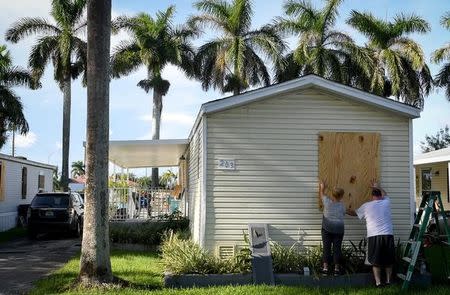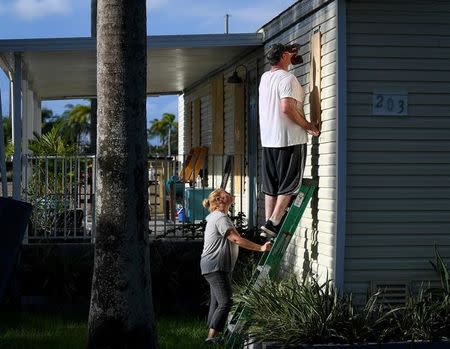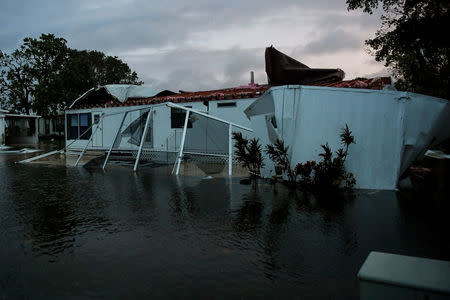Few mobile homes in Florida are storm-ready, despite code
By Bernie Woodall and Patrick Rucker FORT LAUDERDALE, Fla./WASHINGTON (Reuters) - Only a fraction of mobile homes in Florida were strapped down with the kind of hardened braces meant to withstand fierce storms before Hurricane Irma hit the state, experts said, leaving more than a half-million homes vulnerable to serious damage. About one-third of Florida's roughly 850,000 mobile homes were installed to current code, according to industry data. The standards were devised after Hurricane Andrew struck Florida in 1992, uprooting thousands of mobile homes like tin cans. The rest still have their original underpinnings, making them even more vulnerable to a catastrophe like Irma, whose maximum sustained winds on Sunday afternoon were 120 miles per hour (195 kph). By Monday, Irma had weakened to a tropical storm but there was far-flung damage to mobile home communities. At the Trinidad Trailer Court in Miami, the storm punched a hole in the roof of Ladesse Lamay's home. "I don't know what I am going to do," said the 58-year-old. "I need money to fix my roof and I have no money." Melida Hernandez, 67, found her home split down the middle by a tree when she returned from the church where she had sought shelter. "I wanted to cry but this is what it is, this is life," she said. There are more than 5,000 mobile home communities across the state. Most residents own their homes and pay monthly rent to park in a lot. The arrangement is popular among retirees as well as low-income families looking for an affordable housing option. There is no cheap way to upgrade an old mobile home, according to the Federal Emergency Management Administration. Florida has subsidized more than 30,000 upgrades. But that may not help with a hurricane like Irma, said Jim Ayotte, head of the Florida Manufactured Housing Association. Even homes with foundations can buckle under the kind of winds and storm surges that a Category 3 storm like Irma delivered, experts said. Mobile homes, even those secured by the required steel bands, have less resilience. "It could be, when the storm passes, the frame is all that's left," said Ayotte. (Reporting by Bernie Woodall in Fort Lauderdale, Fla., and Patrick Rucker in Washington; Additional reporting by Andy Sullivan and Ben Gruber in Miami; Editing by Peter Cooney and Chizu Nomiyama)




